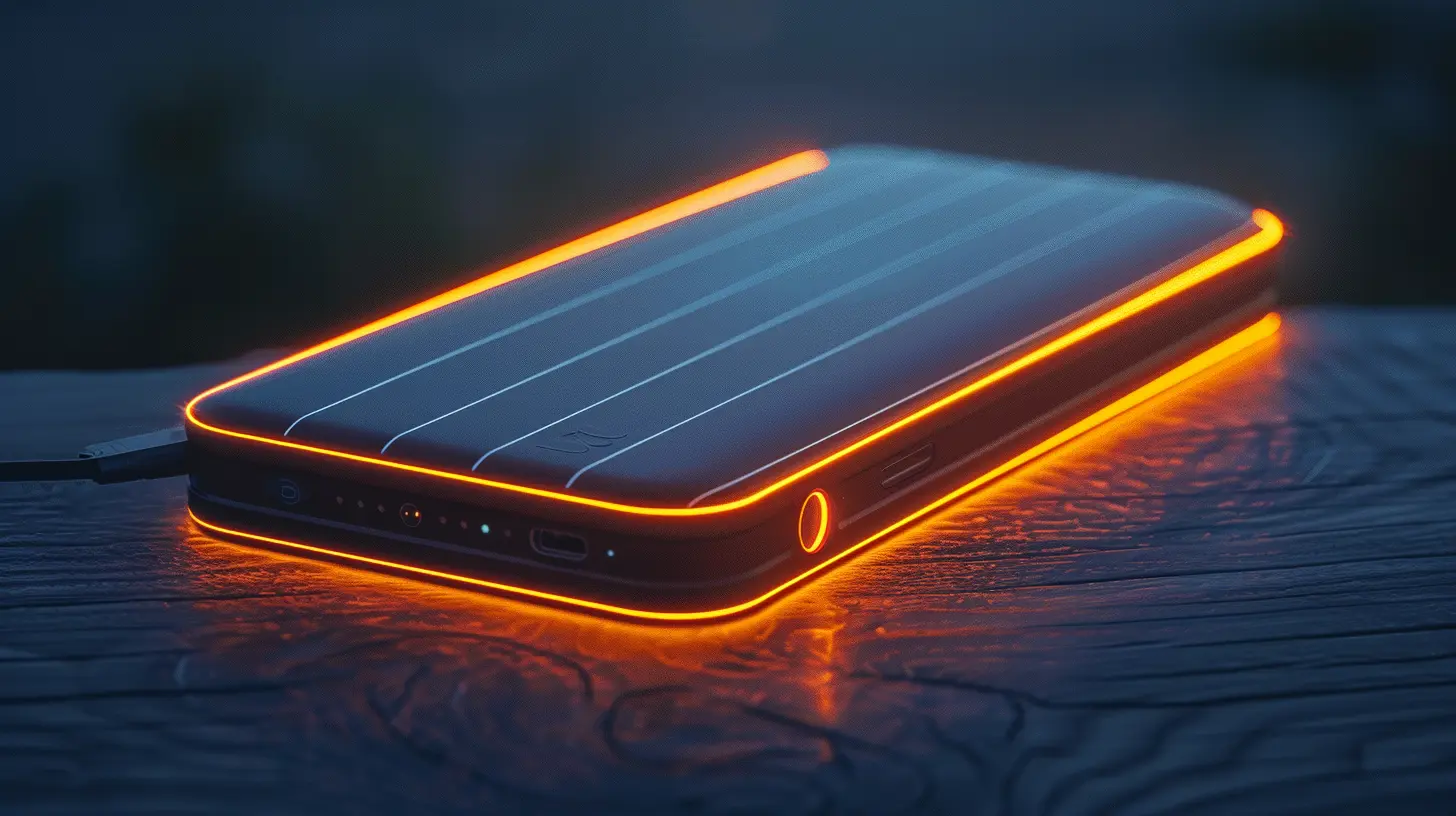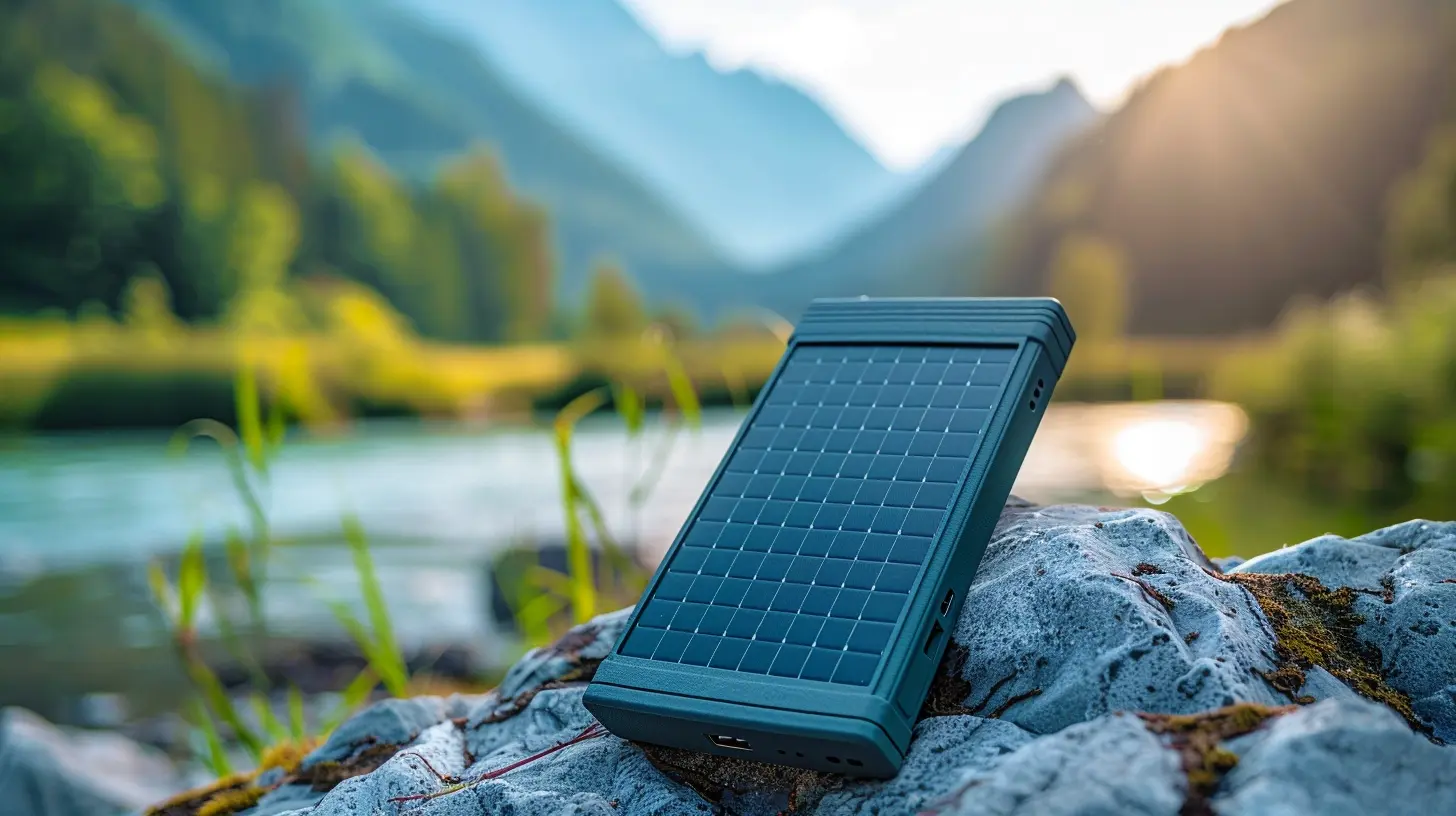Sustainable Charging Solutions: Solar and Kinetic Power Banks
11 June 2025
In today's tech-driven world, power is everything. Whether you're traveling, hiking, or just spending your day out and about, no one wants to see their smartphone or gadgets hit 0% battery. It’s practically the modern-day nightmare, right? But that’s where power banks come in. However, traditional power banks aren’t always the most eco-friendly option; they rely on electricity generated from non-renewable sources.
So, what’s the alternative? Enter sustainable charging solutions like solar and kinetic power banks. These nifty devices harness clean, renewable energy to keep your gadgets juiced up without harming the planet. In this article, we’ll explore everything you need to know about solar and kinetic power banks—what they are, how they work, their benefits, and why you should consider making the switch.

Why Sustainable Charging Solutions?
Before diving into the different types of eco-friendly power banks, let’s talk about why sustainable charging solutions are so important. We live in a world where the demand for electronics is constantly on the rise. Think about it—how many devices do you own? Smartphones, laptops, smartwatches, tablets… the list goes on. And while these gadgets are great, they need power, and the majority of that power comes from burning fossil fuels. Not exactly a win for the environment.Switching to sustainable charging solutions can help reduce your carbon footprint. By choosing solar or kinetic power banks, you're opting for energy that’s either from the sun or from your own movement. It’s a small step, but if more people made the swap, the collective impact could be huge.
The Problem With Traditional Power Banks
Traditional power banks are undeniably convenient, but they come with their own set of issues. For one, they need to be charged via an electrical outlet, which, as we mentioned, often means using energy derived from non-renewable sources.Secondly, many of these power banks are made with materials that aren’t exactly eco-friendly. Once they reach the end of their life cycle, they contribute to electronic waste—another growing global issue.
Given that renewable energy is becoming more accessible, it only makes sense to embrace solutions that are both better for the environment and just as convenient.

Solar Power Banks: Capturing Energy From the Sun
When you think of renewable energy, solar power is probably one of the first things that comes to mind. Solar power banks are designed to harness this limitless energy source, converting sunlight into electricity that you can use to charge your devices.How Solar Power Banks Work
A solar power bank features built-in photovoltaic (PV) panels, which capture sunlight and convert it into energy through a process called the photovoltaic effect. This energy is then stored in the power bank's internal battery, allowing you to charge your devices whenever you need to—even when the sun isn’t shining.The key advantage here is that as long as you have access to sunlight, you're never truly out of power. Whether you're on a hike, camping in the wilderness, or simply relaxing at the beach, a solar power bank can be your lifeline.
Benefits of Solar Power Banks
- Eco-friendly Energy Source: Solar power banks lower your reliance on electricity from the grid, which is often generated using fossil fuels. Sunlight is free, abundant, and renewable.- Portability: Most solar power banks are compact and lightweight, making them ideal for outdoor enthusiasts or people who are always on the go.
- Backup Power: In emergency situations, such as power outages, a solar power bank can be a literal lifesaver.
- Cost-effective in the Long Run: Once you’ve bought the solar power bank, you’re essentially using free energy. No more worrying about electricity bills adding up over time.
Are There Any Drawbacks?
While solar power banks offer a lot of benefits, they aren't without their limitations. For one, they rely on sunlight to charge, which can be a bit tricky if you’re in a cloudy area or indoors for an extended period. Additionally, charging them up via solar panels can take longer than plugging them into a wall outlet.That said, many solar power banks now come with dual charging options—solar for when you’re outdoors and traditional charging for when you’re near an outlet. This hybrid approach ensures that you’re always covered.

Kinetic Power Banks: Harnessing Energy From Movement
If solar energy feels a bit too passive for your liking, how about generating power through your own movement? That’s exactly what kinetic power banks do. They convert motion into energy, which means that every step, shake, or movement you make could be used to charge your devices.How Kinetic Power Banks Work
Kinetic power banks use a process known as electromagnetic induction to generate energy. Inside the device, there’s typically a small mechanism that moves when you do—whether you’re walking, running, or even shaking the power bank. This movement causes a magnet to move through a coil, which generates electrical energy that is stored in the power bank’s battery.Think of it like winding up an old-school watch—except instead of telling time, you’re storing energy that can charge your smartphone.
Benefits of Kinetic Power Banks
- No Sun? No Problem!: Unlike solar power banks, kinetic power banks don’t rely on any external factors like weather. If you’re moving, you’re generating power.- Great for Active Lifestyles: If you’re someone who enjoys hiking, running, cycling, or even just walking a lot, a kinetic power bank can seamlessly fit into your lifestyle.
- Eco-friendly: Just like solar power banks, kinetic power banks reduce your reliance on traditional electrical outlets and fossil fuels.
- Durable: These power banks are usually designed to handle a lot of movement, so they tend to be pretty rugged and durable—perfect for outdoor adventures.
Are There Any Drawbacks?
Kinetic power banks are a little less common and can be more expensive than solar power banks. Additionally, they typically generate less energy compared to solar power banks, which means they may not be suitable if you have multiple high-power devices that need charging. For now, they are best used as a backup or supplementary charging solution, rather than a primary one.
Solar vs. Kinetic Power Banks: Which One Is Right for You?
Both solar and kinetic power banks have their unique advantages and limitations, but how do you choose between them? The best option for you will depend on your lifestyle and specific needs.Choose a Solar Power Bank If:
- You spend a lot of time outdoors in sunny environments.- You want a reliable backup power source for emergencies.
- You don’t mind waiting a bit longer to charge your devices.
- You prefer a more widely available and cost-effective solution.
Choose a Kinetic Power Bank If:
- You have an active lifestyle and are constantly on the move.- You want a charging solution that doesn’t depend on sunlight or weather conditions.
- You’re okay with using the power bank as a supplementary energy source rather than a primary one.
If you can’t decide, why not have both? Some manufacturers are even starting to combine both solar and kinetic technologies into hybrid power banks. This way, you get the best of both worlds.
What About Hybrid Power Banks?
While solar and kinetic power banks are great on their own, some companies have started creating hybrid power banks that combine multiple energy sources. For example, you could have a power bank that charges via solar panels but also has a kinetic energy generator. This gives you more flexibility and ensures that no matter where you are, you’ll always have access to a renewable energy source.These hybrid solutions are still relatively new and can be more expensive, but they offer a promising future for sustainable tech.
The Future of Sustainable Charging: What’s Next?
As technology continues to advance, we can expect even more innovative and sustainable charging solutions to hit the market. From improved solar panels to more efficient kinetic energy generators, the future looks bright—pun intended!Additionally, as awareness about climate change and sustainability grows, more consumers are demanding eco-friendly tech solutions. This shift in demand will likely lead to even more options and better-performing sustainable power banks.
Conclusion: Is It Time to Make the Switch?
Switching to a sustainable power bank is not just a win for you—it’s a win for the planet. Solar and kinetic power banks offer convenient, eco-friendly alternatives to traditional chargers, and they’re especially useful for people who spend a lot of time outdoors or on the move. While they might have some limitations, the benefits far outweigh the drawbacks—especially when considering the environmental impact of traditional power sources.So, if you’re ready to reduce your carbon footprint and embrace renewable energy, it might be time to make the switch to a sustainable charging solution. Whether you choose solar, kinetic, or a hybrid option, you can rest easy knowing that you’re doing your part to power your gadgets in a greener way.
all images in this post were generated using AI tools
Category:
Environmental TechAuthor:

Jerry Graham
Discussion
rate this article
2 comments
Soraya Barlow
Great insights! It's inspiring to see innovative solutions like solar and kinetic power banks promoting sustainability in tech. Thank you!
September 25, 2025 at 2:35 AM

Jerry Graham
Thank you for your kind words! I'm glad you found the insights inspiring. Sustainable solutions like solar and kinetic power banks are indeed shaping the future of tech.
Carmen Fields
Embrace the future! Sustainable charging solutions empower us to harness nature's energy, reducing our carbon footprint and energizing innovation.
June 19, 2025 at 4:19 AM

Jerry Graham
Thank you! Embracing sustainable charging solutions not only supports innovation but also helps us protect our planet for future generations.

